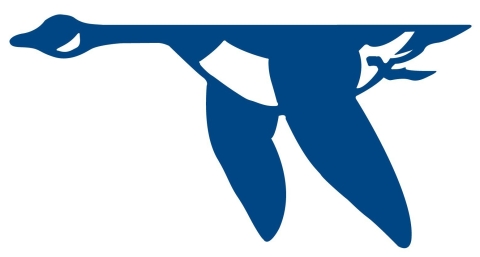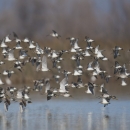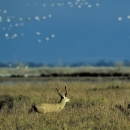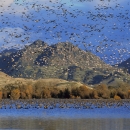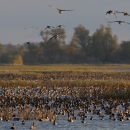About Us
Sutter NWR was established in 1945 with funds from the Migratory Bird Hunting and Conservation Stamp Act (today it is known as Federal Duck Stamp) and the Lea Act. It was established to provide feeding and nesting areas for migratory birds and alleviate crop depredation.
About 80% of the refuge is located in the Sutter Bypass. During major flood events, the Bypass diverts winter flood water from the Sacramento River, which may cover portions of the refuge with up to 12 feet of water.
Waterfowl are present September through April and numbers peak later than most other refuges in the Complex
between January and February. Sutter NWR regularly supports wintering peak populations of over 150,000 ducks and 70,000 geese.
The mixed riparian riparian
Definition of riparian habitat or riparian areas.
Learn more about riparian forest habitat on the refuge is important for breeding and migrating passerine birds, and supports a large heron/egret rookery. The refuge provides habitat for several Federal and State endangered and threatened species, including giant garter snake, Chinook salmon, yellow-billed cuckoo, and Swainson's hawk.
There are limited wildlife viewing and photographic opportunities from Hughes Road, which bisects the refuge.
Our Mission
The mission of the National Wildlife Refuge System is to administer a national network of lands and waters for the conservation, management and, where appropriate, restoration of the fish, wildlife and plant resources and their habitats within the United States for the benefit of present and future generations of Americans.
Other Facilities in this Complex
Sutter National Wildlife Refuge is managed as part of the Sacramento National Wildlife Refuge Complex, with headquarters at Sacramento National Wildlife Refuge. The Refuge Complex is comprised of 5 National Wildlife Refuges (Sacramento, Delevan, Colusa, Sutter and Sacramento River NWRs) and 3 Wildlife Management Areas (Willow Creek-Lurline, Butte Sink and Steve Thompson North Central Valley WMAs).

